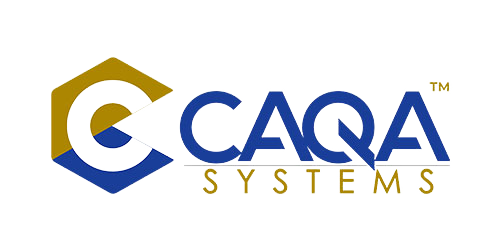South Australia is experiencing an unprecedented boom in vocational education and training, with record numbers of apprentices and trainees entering critical industries that form the backbone of the state's economic future. The latest data released by the National Centre for Vocational Education Research (NCVER) showcases a remarkable upward trajectory in apprenticeship commencements, training retention, and successful completions across key priority sectors. This training revolution is no accident—it represents the culmination of strategic government investment and industry collaboration aimed at addressing critical skills shortages while ensuring South Australians have access to quality career pathways.
Against the backdrop of nationwide concerns about vocational education quality and regulatory challenges, South Australia stands out as a beacon of positive transformation. The state has not only recovered from pandemic-related disruptions but has surged well beyond pre-COVID training levels in crucial trades supporting housing, infrastructure, and essential community services. This remarkable turnaround comes at a pivotal moment as the state undertakes ambitious infrastructure projects and expands social services, all requiring a skilled workforce ready to meet tomorrow's challenges.
The latest NCVER quarterly report reveals a vocational education ecosystem in robust health, with apprentice numbers in critical construction trades reaching historic highs. Electrical apprenticeships have seen particularly dramatic growth, with a staggering 69.1 percent increase in active apprentices compared to 2019 figures. This represents an additional 1,290 future electricians entering the workforce since pre-pandemic levels, with an 8.1 percent growth (235 additional apprentices) in just the past year alone. This surge in electrical trade training directly supports major government initiatives, including the SA Housing Roadmap and numerous infrastructure projects across the state.
The construction sector more broadly displays similarly impressive growth trajectories. Carpentry apprenticeships have increased 53.4 percent since 2019, with a steady 3.6 percent growth continuing over the past twelve months. Plumbing apprenticeships show even stronger recent momentum, with in-training numbers up 53.1 percent from 2019 baselines and accelerating with a 9.9 percent increase just in the last year. The mechanical engineering trades have experienced the most dramatic long-term growth, with in-training apprentice numbers up an extraordinary 77.1 percent compared to 2019 and continuing strong with a 6.2 percent increase over the prior year.
Perhaps most significantly, these apprenticeship pathways are demonstrably leading to real employment outcomes. The NCVER Apprentice and Trainee Outcomes 2024 report confirms that an impressive 95.1 percent of South Australians who completed vocational qualifications in 2024 secured employment, the equal highest employment rate nationwide. This exceeds both the state's 2023 performance (94.5 percent) and significantly outpaces the national average of 91.9 percent. These statistics reflect not just quantitative growth but qualitative improvement in how effectively the training system connects to genuine labor market needs.
This vocational education renaissance hasn't happened by chance. It represents the outcome of substantial public investment and policy coordination between state and federal governments. The 2024-25 State Budget committed an additional $692.6 million over five years to skills development initiatives, bringing total investment under the National Skills Agreement to an unprecedented $2.3 billion in partnership with the Commonwealth. This record funding commitment signals clear recognition of vocational education's central role in the state's economic strategy and future prosperity.
Beyond the construction trades, other essential service sectors are experiencing significant training growth. Early childhood education, a critical enabler for workforce participation and child development, saw commencements in the Diploma of Early Childhood Education and Care increase by 19.3 percent compared to the previous year. This strategic workforce expansion aligns perfectly with the planned implementation of universal three-year-old preschool from 2026, ensuring appropriately qualified educators will be available to support this important social initiative.
The positive trends extend beyond mere commencements to the successful completion of qualifications. Construction trades, including electricians, carpenters, plumbers, and engineering fabricators, all showed significant growth in completions across the 12 months ending September 2024, with improvements compared to both 2019 and 2023 benchmarks. This suggests that not only are more people starting apprenticeships, but the training system is becoming more effective at supporting learners through to successful qualification.
Training quality and participant engagement also appear to be improving substantially, with cancellations and withdrawals decreasing by nearly a quarter (24.8 percent) in the 12 months ending September 2024 compared to the previous year. This represents 1,570 fewer discontinued training arrangements, indicating more students are finding their training relevant, engaging, and manageable alongside other life commitments.
The construction sector boom is particularly strategic given South Australia's ambitious infrastructure agenda and housing targets. Every additional qualified electrician, carpenter, plumber and fabricator represents increased capacity to deliver on major government initiatives, including social and affordable housing expansion, hospital upgrades, transport infrastructure, renewable energy projects, and defense industry contracts. By ensuring a pipeline of skilled workers in these critical areas, the state is essentially future-proofing its ability to deliver on key commitments that affect citizens' everyday lives.
Early indicators suggest this skills investment is already paying economic dividends beyond the training statistics themselves. The construction sector has maintained strong activity levels despite challenging economic conditions, with housing approvals remaining resilient compared to other states. Major infrastructure projects are progressing on schedule with fewer skills-related delays than experienced in other jurisdictions. Most importantly, youth unemployment in South Australia has begun tracking downward as vocational pathways provide meaningful career entry points for young people seeking alternatives to university education.
The focus on trade qualifications represents a pragmatic recognition of changing workforce demands and evolving career preferences. While university education remains valuable for many career pathways, the renewed emphasis on vocational skills acknowledges that many of the most in-demand jobs require technical expertise rather than academic degrees. The strong employment outcomes for vocational graduates—exceeding 95 percent—directly challenge outdated perceptions about the relative value of different educational pathways.
Industry partnerships have played a crucial role in this vocational renaissance. Government training initiatives have been developed in close consultation with employer groups, ensuring that qualifications truly align with workplace needs. Training providers have implemented more flexible delivery models, including block training and mobile learning technologies, making apprenticeships more accessible to diverse learner groups, including mature-age career changers, regional residents, and those with family responsibilities.
The state government's commitment extends beyond simply increasing training numbers to improving the quality and relevance of vocational education. Training packages have been modernised to incorporate emerging technologies and sustainable practices, ensuring graduates are equipped for today's workplace requirements and tomorrow's evolving industry standards. This forward-looking approach is particularly evident in electrical apprenticeships, where training now incorporates renewable energy systems, battery storage technologies, and smart home integration, preparing electricians for the rapidly evolving energy landscape.
South Australia's approach represents a holistic workforce development strategy rather than merely addressing immediate skills shortages. By investing in foundational trades that support multiple industry sectors, the state is building workforce resilience and adaptability. A qualified carpenter, for instance, contributes not just to housing construction but potentially to manufacturing, maintenance, heritage restoration, and commercial building, creating career flexibility for individuals while addressing diverse economic needs.
The training boom also represents a socioeconomic opportunity, providing accessible pathways to stable, well-compensated careers for citizens from diverse backgrounds. Apprenticeships have historically served as effective social mobility mechanisms, allowing individuals to earn while they learn and avoid the substantial debt often associated with university education. The current expansion maintains this tradition while modernising delivery approaches to be more inclusive of previously underrepresented groups, including women, Aboriginal people, and career changers.
Regional communities are particularly benefiting from the vocational education expansion. Training delivery has been strategically extended into rural and remote areas, ensuring regional residents can access quality skills development without relocating to metropolitan Adelaide. This approach not only addresses skills shortages in regional areas but also helps retain population and economic activity in smaller communities facing demographic challenges.
The demonstrated success in construction trades provides a model being expanded to other priority sectors, including aged care, disability services, and advanced manufacturing. Each of these areas faces substantial workforce challenges that pure market forces have struggled to address, highlighting the importance of coordinated government-industry approaches to workforce development. By applying lessons from the construction training boom to these sectors, similar improvements in training engagement and completion rates may be achievable.
Education providers themselves have undergone significant transformation to support this vocational renaissance. TAFE SA has implemented comprehensive quality improvement initiatives, while private training organisations have been engaged through contestable funding models that reward performance and completion outcomes. This blend of public provision and private sector innovation has created a more responsive and diverse training ecosystem capable of meeting varied industry and learner needs.
The South Australian experience offers valuable lessons for other jurisdictions facing similar workforce development challenges. Chief among these is the importance of sustained, predictable funding frameworks that give training providers confidence to invest in facilities, equipment and specialist staff. The multi-year commitment under the National Skills Agreement provides the stability necessary for systematic improvement rather than short-term fixes.
Another key lesson relates to the critical importance of genuine industry involvement throughout the training cycle—from qualification design through to assessment validation. When employers actively participate in shaping training content and delivery approaches, the resulting skills align more closely with workplace needs. This alignment not only improves employment outcomes but also increases employer confidence in the training system, creating a virtuous cycle of engagement.
The impressive reduction in cancellation and withdrawal rates demonstrates the importance of comprehensive student support systems. Successful apprenticeship completion requires more than just technical training—it demands attention to the holistic needs of learners including mentoring, financial literacy, mental health support, and assistance navigating workplace relationships. By addressing these broader success factors, South Australia has managed to retain more learners through to qualification, maximising the return on public training investment.
Digital transformation has been another enabler of the training boom, with innovative technologies making learning more accessible and engaging. Virtual reality simulations allow apprentices to practice complex or hazardous tasks safely before attempting them in real environments. Learning management systems enable more flexible progression pathways, allowing students to move at appropriate paces while maintaining quality standards. These technological innovations have been particularly valuable in regional delivery contexts where access to physical training facilities may be limited.
The early childhood education growth represents a strategic alignment between education policy and workforce development. By increasing training capacity in parallel with the planned expansion of early childhood services, the state is avoiding the skills bottlenecks that have hampered similar initiatives in other jurisdictions. This coordinated approach ensures that policy implementation is not constrained by workforce limitations.
Looking forward, the South Australian training system faces both opportunities and challenges. Maintaining the current growth trajectory will require continued public investment alongside greater employer contributions to training costs. Technological change will necessitate regular updating of training content and delivery approaches, requiring ongoing professional development for the training workforce itself. Demographic shifts, including an aging population, will create both increased demand for certain services and potential constraints on labor supply that training alone cannot fully address.
Despite these challenges, the foundation has been established for a world-class vocational education system capable of supporting South Australia's economic and social objectives. The integration of training policy with broader government priorities—from housing to healthcare, infrastructure to renewable energy—demonstrates a sophisticated understanding of skills development as an enabling factor for almost every major public initiative.
The statistical evidence is compelling: more South Australians are undertaking vocational training in priority areas, more are completing their qualifications, and more are securing employment as a result. Behind these numbers lie thousands of individual success stories—people who have found meaningful careers, businesses that have secured the skilled workers they need to grow, and communities that benefit from essential services delivered by qualified professionals.
As Australia navigates complex workforce challenges, including technological disruption, demographic change, and evolving industry structures, South Australia's apprenticeship revolution offers valuable insights into effective policy approaches. By combining substantial public investment with industry partnership, flexible delivery models, and unwavering focus on quality outcomes, the state has demonstrated that vocational education can indeed deliver on its promise as a cornerstone of economic prosperity and social wellbeing.


































